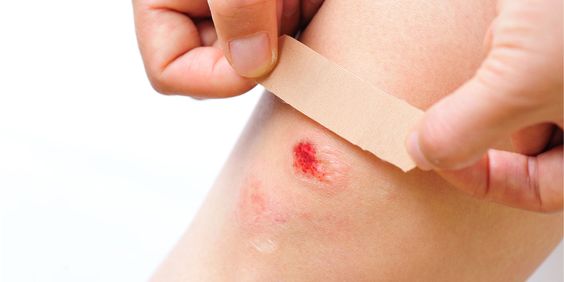Band-Aids, as a common first-aid item in daily life, are indeed convenient to use, but did you know? There are five situations in which it is inappropriate to use a Band-Aid. Do you know how to use a Band-Aid correctly? Let's explore it together.
The function of band-aid :
Hydrocolloid Band-Aids can protect wounds, absorb exudate, promote healing, and relieve pain. They are one of the essential care products in the home medicine cabinet. When using hydrocolloid band-aids, you need to use them correctly and pay attention to the wound condition. If you have any questions or discomfort, please seek medical advice promptly. The function of hydrocolloid band-aid is to achieve the effect of moistening the wound and healing it as quickly as possible. However, this does not mean that all wounds are suitable for band-aids.
So, which wounds are not suitable for band-aids? Here are our answers:
1. Large or deep wounds: If the wound is too large or deep, exceeding the width of the Band-Aid absorbent pad, or the depth exceeds 0.5 cm, then such a wound is not suitable for using a Band-Aid. Because wounds that are too deep can easily cause anaerobic infections, such as tetanus.
2. Infected or suppurating wounds: If the wound is red, oozes fluid, or even suppurates, it means it is infected. At this time, remember not to use a band-aid. You need to seek treatment from a professional surgeon before bandaging.
3. Animal bites: After being bitten by an animal, the first thing we need to do is to continuously flush the wound with soap and water for 15 minutes to reduce the risk of rabies infection. Rinse with clean water also has some effects. After treatment, go to the hospital for vaccination as soon as possible. At this point, remember not to use a Band-Aid.
4. Eczema: People with eczema may have fluid oozing from their skin. If you use a band-aid with poor breathability at this time, it may aggravate the condition.
How to use Band-Aid correctly?
Before we use the Band-Aid, we need to do a series of preparations. First, we need to flush the wound with saline or water, and then gently remove dirt or foreign matter from the surface of the wound. Next, we can use a cotton ball dipped in iodophor or 75% alcohol to wipe the wound and surrounding skin. Remember, the wiping range should be centered on the wound and extend 3 to 5 cm outward. After the wound is slightly dry, we can bandage it with a band-aid.
Protecting wounds and using band-aids correctly is basic knowledge that each of us should master. By following the above steps, I believe you can properly handle various wound problems.
For more information customized on Innomed®Hydrocolloid Dressing, Refer to the Previous Articles. If you have needs, you are welcome to contact us; You Wholeheartedly. At longterm medical, we transform this data by Innovating and Developing Products that Make Life easier for those who need loving care.
Editor: kiki Jia
Date: January 27, 2023

 English
English عربى
عربى Español
Español русский
русский 中文简体
中文简体








